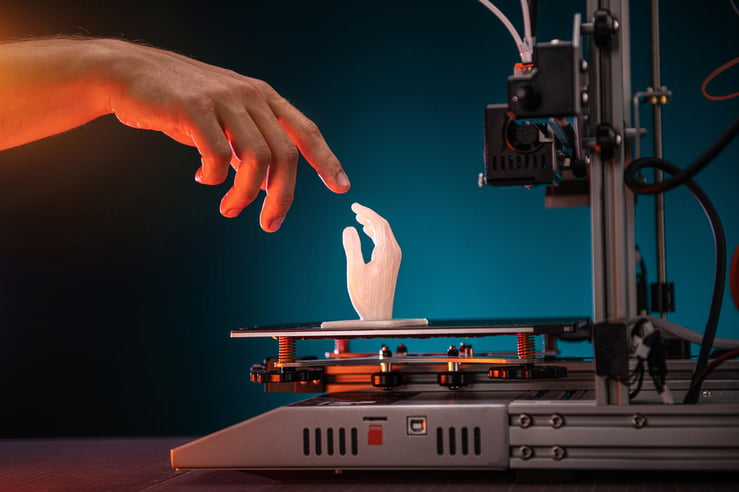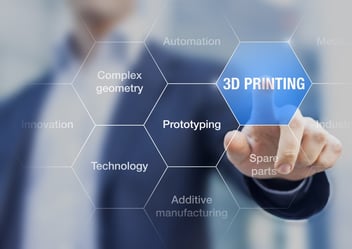For several years, few companies considered Additive Manufacturing as a scalable method for serial production, since the first 3D printing systems did not allow high productivity, considering the sometimes poor surface finish and the inadequate properties of the materials initially used.
Now more than ever before considerable progress has been made regarding the production processes in the development of industrial-scale 3D printing, resulting in multiple production lines for various item ranges.

Additive Manufacturing today
Technologically-advanced Additive Manufacturing solutions are based on optimised materials, far faster processes and solutions that allow greater productivity, allowing companies to adopt an additive manufacturing or hybrid approach.
The flexibility of the individual 3D printing processes for serial production is helping manufacturers to transform their production models into more agile and efficient systems, as well as mitigating procurement chain interruptions.
Traditional manufacturing processes, which are predominantly injection moulding- or casting-based, entail a far more limited approach to production than Additive Manufacturing.
In addition, when looking at the differences between additive and traditional manufacturing, there is a further aspect that must always be taken into consideration: innovation, applied to 3D printing, allows companies to manufacture finished products while minimising the post-processing steps.
Focus: the basic difference between traditional and additive manufacturing

What is the basic difference between Additive Manufacturing and Traditional Manufacturing?
Additive manufacturing consists in adding layers of material to create an object. Traditional manufacturing methods, on the other hand, are subtractive, consisting in creating the final object by removing material from a raw material, or can be limited to the use of moulds. These latter methods are time consuming, whereas in 3D printing, the final piece is itself equivalent to the mould.
The important thing to be emphasised, however, is that Additive Manufacturing is a simpler, more agile production system than traditional methods, because it follows the principles of “plug and play” and on-site and on-demand production.
It is possible to create complex, custom forms relatively easily, without having to invest in expensive, product-specific and complicated machines such as those, for example, required for the manufacture of forged products or associated with foundries.
Additive Manufacturing also offers greater productive flexibility, it allows modifications to the design of objects to be made quickly, without having to make significant changes to the production equipment.
Creation of complex geometries: the saving factor
There are also some considerable functional differences. The most significant of these lies in the fact that additive manufacturing can be used to create complex geometries that would be difficult or impossible to obtain with traditional manufacturing methods. We are talking about geometries that are often more robust - and at the same time lighter - than their counterparts manufactured using traditional techniques.
In addition to this, additive manufacturing eliminates the additional costs usually associated with the creation of more complex objects. A highly complex part, manufactured using traditional methods, usually costs far more than using a 3D printer.
As a matter of fact, in additive manufacturing the process is the same, regardless of the complexity of a part, which allows for cost-savings.
The functional differences between the two manufacturing approaches

A further functional difference between additive and traditional manufacturing is the fact that Additive Manufacturing involves a considerable reduction in the quantity of waste material.
In a subtractive manufacturing process, a certain amount of waste is generated due to machining by removal. Additive manufacturing only uses the material required to create a part, thus ensuring minimal waste.
It should be emphasised that parts that require support structures for the printing of the finished object still entail a certain amount of waste.
With additive manufacturing, it is also possible to print a set of pieces. With traditional methods, each object has to be manufactured separately before being assembled. With next-generation 3D printing, the production and assembly phases can be combined in one production process.
Another important functional difference between additive manufacturing and subtractive methods is that Additive Manufacturing can be used to create custom products, but on a large scale (mass-customisation), easily.
The manufacturing techniques usually used by companies create large quantities of identical products but offer little scope for customisation. On the other hand, as 3D printers can create objects with great scope for configuration, they are ideal for products characterised by customised elements.







